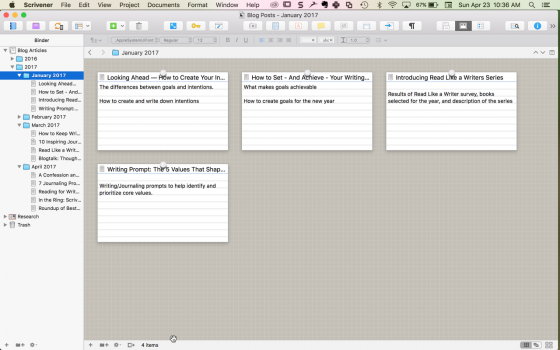
It has a corkboard view, allows you to split the screen between different parts of the file so you can view documents side-by-side, and by default the program displays your entire document in an outline on the sidebar, among other things.

Compared to Word, it has limited text-formatting capability, but it comes with other features that can be invaluable for drafting fiction or, in my case, organizing worldbuilding notes. Scrivener is basically a word processing program. Worst case: after this you’ll know what not to do, ever, when writing. I’m a chronic pantser, so I’m not going to give you plotting tips, but I can tell you how I keep track of all the shit I come up with on the fly as I’m writing, and how that eventually makes a cohesive file on a new world!
#STORYO VS SCRIVENER HOW TO#
If you don’t already use the program, or are simply new to writing and unsure how to approach this worldbuilding nonsense, maybe this post will be of some help to you. Long story short, if you already use Scrivener, you may not find anything new in this post. In fact, I’d much rather just discuss his history-making.) soto collected the red fibers with tweezers and placed them inside an evidence bag.How to use Scrivener for worldbuilding–and a lot of other things, incidentally–is the first in a line of what I’ll call “The Basics.” Generally, what I’m interested in writing about is a bit farther down the line of writing craft, but if somebody new to writing visits my blog, I want to have articles to point them to, and which I can also build on later with posts like “Characterization in the Luna Books,” or “How Tolkien Built a World on Linguistics.” (The latter is going a bit far for me. i then looked in the guest bathroom down the hall from the kitchen and observed another evidence technician, william soto, collecting unknown red fibers from inside the bathroom sink. collection of the bullet casing occurred at 3: 42 p. the bullet casing was found on the floor beneath the kitchen table and was picked up by wilson (with gloved hands) and placed in an evidence bag. i later observed detective laura wilson collect a bullet casing from the tile floor in the kitchen after another investigator first photographed the area. dusting the doorknob did reveal latent prints, which sanders lifted with tape and transferred to a small card.

(make it similar to the example provided beneath jordan’s notes.) jordan’s notes tuesday, february 5 i observed evidence technician josh sanders dust the inside doorknob on the front door for latent fingerprints. complete the chain of custody document for that item. choose one of the items of physical evidence mentioned in jordan’s notes below. your job will be to record all of the required information on a chain of custody document. Jordan is shadowing the police again at a different crime scene. conrad describes africans as savages, while willett is impressed with their sophisticated cultures. conrad describes africans in beautiful terms, while willett uses language like “speechless” and stunned.” conrad says that africans are wild and free, a view shared by willett, picasso, and matisse. the revolution of twentieth century art was under way! which statement best explains how african culture is presented in the two excerpts? conrad presents africans as religious, while willett suggests that they are incredibly artistic. ambroise vollard then borrowed it and had it cast in bronze. he records that derain was "speechless" and "stunned" when he saw it, bought it from vlaminck and in turn showed it to picasso and matisse, who were also greatly affected by it. one piece is still identifiable it is a mask that had been given to maurice vlaminck in 1905.

gauguin had gone to tahiti, the most extravagant individual act of turning to a non-european culture in the decades immediately before and after 1900, when european artists were avid for new artistic experiences, but it was only about 1904–5 that african art began to make its distinctive impact. read the passage from frank willett, a british art historian. they howled and leaped, and spun, and made horrid faces but what thrilled you was just the thought of their humanity-like yours-the thought of your remote kinship with this wild and passionate uproar.

well, you know, that was the worst of it-this suspicion of their not being inhuman. it was unearthly, and the men were-no, they were not inhuman. we are accustomed to look upon the shackled form of a conquered monster, but there-there you could look at a thing monstrous and free. Read the excerpt from "an image of africa: racism in conrad’s heart of darkness.” the earth seemed unearthly.


 0 kommentar(er)
0 kommentar(er)
